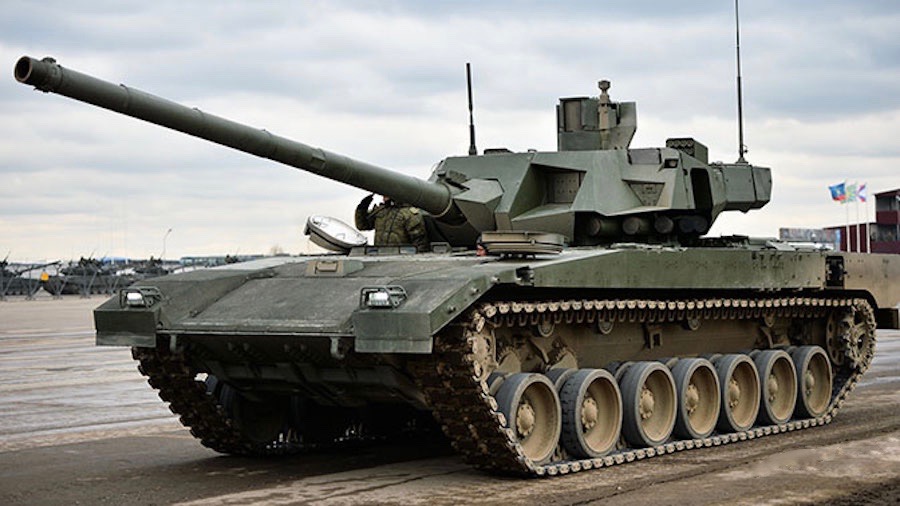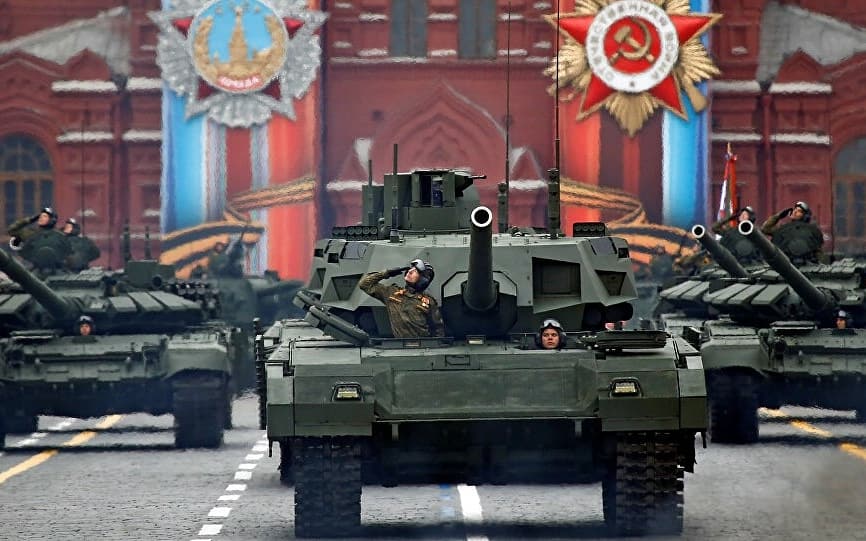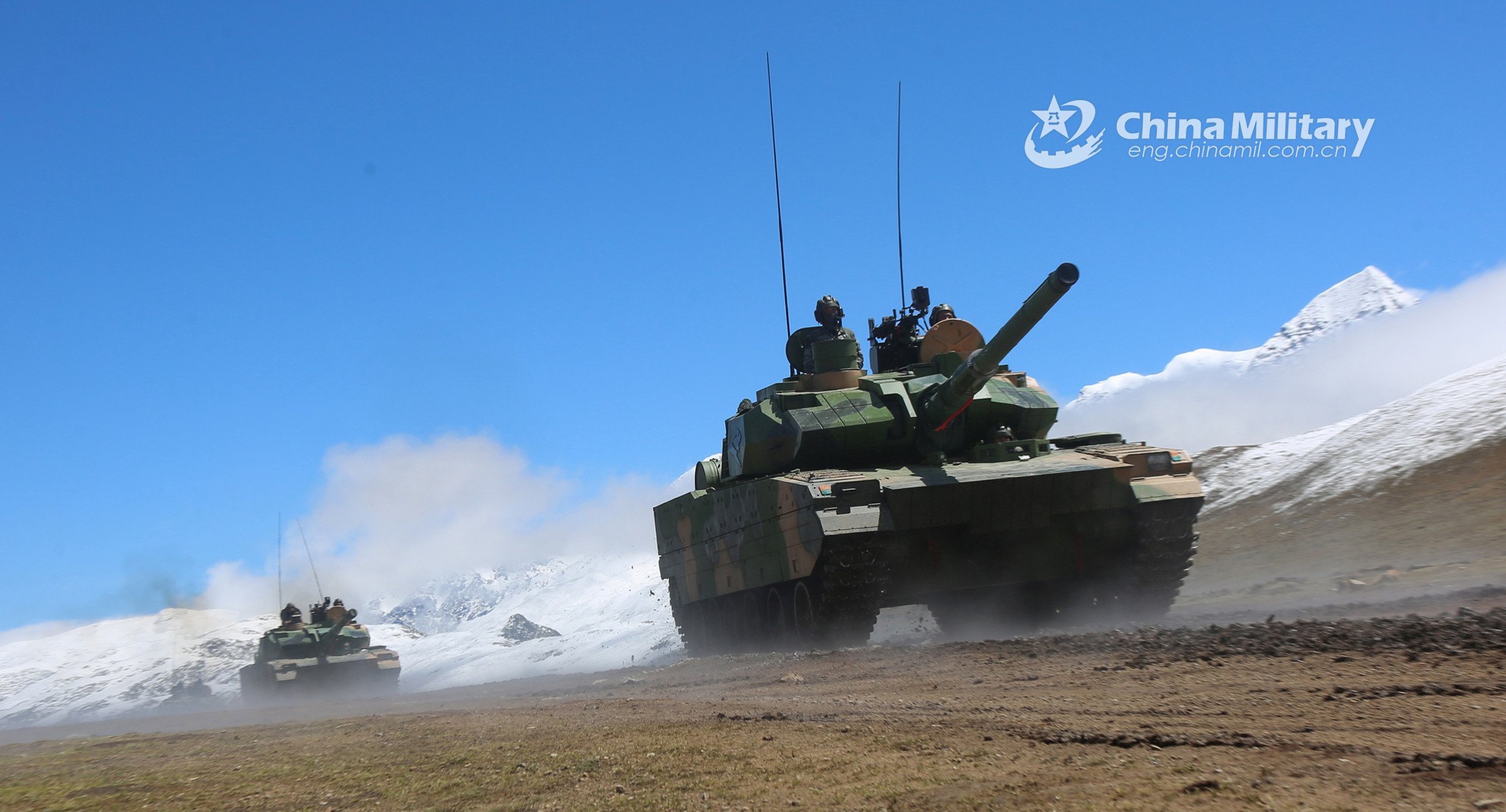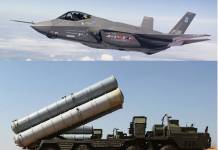Russia has announced the induction of 20 T-14 Armata tanks into the country’s armed forces by the end of the year. Armata’s potential customers include the UAE, Egypt and India.
HAL Tejas Fails To Impress US Navy; Washington Likely To Sideline Indian Jet For Boeing, Lockheed Trainer Aircraft
Alexei Krivoruchko, the Russian Deputy Minister of Defense also said that 65 serial T-90M Proryv tanks, 18 reconnaissance and strike unmanned aerial vehicles of medium and heavy categories and a brigade set of the Iskander-M operational-tactical complex will be delivered ahead of schedule.
On July 5, 2021, Russian Industry and Trade Minister Denis Manturov told the news agency TASS that the serial production of Russia’s latest T-14 ‘Armata’ tank will begin in 2022.
The agency had quoted the minister as saying, “The [tank’s] state trials will come to a close next year. It will actively go into serial production from next year.”

Deputy Prime Minister Yuri Borisov (the then Deputy Minister of Defense of the Russian Federation) said the Defense Ministry has a contract for the supply of two battalions of T-14 tanks and a battalion of BMP T-15 for military testing.
In April last year, Russian Minister of Industry and Trade Denis Manturov had said that the tank was tested in Syria.
T-14 Armata
Military experts have opined that “Armata” is a fundamentally new concept. The Armata is touted as a heavy-tracked universal platform designed to carry different kinds of military weapon systems, including the T-14 Tank and the T-15 Infantry Fighting Vehicle.
The platform’s history can be traced back to the last decade with its first functional prototype built by the Ural Design Bureau of Transport Engineering in 2013.
ZERO Buyers! Boeing ‘Hard Sells’ Its F/A-18 Super Hornets To Indian Navy; Global Customers Give It A ‘Royal Snub’
The weapon system was unveiled before the general public in 2015 on the occasion of Victory Day: a national holiday in Russia commemorating the surrender of Nazi Germany in 1945.
The T-14 in particular is a weapon system based on the Armata platform. The T-14 was developed by Uralvagonzavod, a machine-building company, which is a subsidiary of Rostec — an industrial conglomerate founded by Russian President Vladimir Putin.

The T-14 is the world’s only third post-war tank, specifically designed for offensive roles in direct-action operations. It can also be deployed to aid the offensive efforts of motorized rifle sub-units and neutralize enemy encampments and troops operating in open spaces.
The tank’s main armament is a 125-mm smooth-bore cannon called 2A82-1M which is capable of firing anti-tank guided projectiles. The T-14 houses state-of-the-art onboard equipment including a combat information and control system, radar stations, various sights and comes equipped with a unified tactical control system.
While the tank is traditionally crew operated, an unmanned variant of the Armata Tank had successfully been tested as well. This was revealed in an announcement made by Rostec’s Deputy General Director Vladimir Artyakov in an interview with the Russian newspaper, Krasnaya Zvezda.
“Armata tank was originally designed as a crew-driven vehicle. But the level of modern technology today makes it possible to turn it into a drone – we carried out the appropriate tests and they were successful,” Zvezda was quoted as saying.

Rostec chief Sergei Chemezov said that the unmanned “Armata” variant would not be sent for serial production. “Of course not. We are testing unmanned technologies on this machine. It is mainly used as a crew-driven vehicle,” he said earlier.
“If we talk about the Armata, then everything will be as automated as possible. For example, the crew of the Armata does not need to aim precisely, it is only necessary to approximately aim the gun at the target. That is, this machine uses elements of artificial intelligence that help the crew to fire. Again, the operator only needs to indicate the direction to the target, then everything is done independently,” Chemezov had elaborated.
Is India Interested In T-14 Armata?
The Galwan Valley clash at the Line of Actual Control last year led to an over yearlong eyeball-to-eyeball standoff between nuclear powers, India, and China up in Eastern Ladakh.
Despite the marathon military-to-military talks held to de-escalate the border tension, experts believe that an end to hostilities between two Asian powers is a distant reality.
Reports indicate that China’s People’s Liberation Army has been deploying its newly developed Type-15 light tanks in eastern Ladakh have only added to India’s concerns.

Military experts have cited the need to deploy lightweight tanks capable of carrying out offensive operations in the high-altitude Himalayan region.
The EurAsian Times analyzed the T-14 Armata Tanks would be capable of operating in temperatures as low as -50 degrees Celsius with the installation of mobile power stations that ensure the immediate and smooth engine starts even in extremely cold weather.
“This new feature would be advantageous for India to deploy the tank — provided it decides to buy it — in extreme-cold regions like Eastern Ladakh where the mercury plummets to -40 degrees Celsius in the winter,” Mansij Asthana wrote for The EurAsian Times.
A working paper published by the Stimson Center, a Washington-based think tank, revealed that approximately 86 percent of India’s military equipment is of Russian origin, adding to the case that the T-14 could potentially meet India’s tank problem in the LAC.
According to Samuel Bendett, an expert on the Russian military for the US-based Center for Naval Analyses think tank, the UAE and Egypt are two potential customers of the Russian tank.
“Algeria may be a potential customer too, given that it already has sophisticated Russian military hardware, such as the recently-delivered Terminator anti-tank vehicle. Finally, India is a key destination for Russian military high-tech, such as the T-90 tank,” Bendett told Forbes magazine.
However, military author and Russian weapon systems analyst, Joseph P Chacko has a different assessment about the operational efficacy of the T-14 in high altitudes.
US Military Developing ‘Ghost War Machines’ That Can Traumatize The Opponents & Even Baffle The Allies: Watch
“The Indian Army is a traditional buyer of Russian Tanks and India too is trying to develop its own tank. The Indian project is called the Future Infantry Combat Vehicle (FICV). It is possible that the Indian Army may use a mix of T-14 Armata and FICV in the future.”
“The weight of T-14 Armata is about 55 tons, and India requires a lighter tank at the Ladakh flashpoint where China has occupied additional Indian territories. Sprut-SDM1 light amphibious tank is the most probable candidate which India can induct to cater to the terrain,” Chacko opined.
While the feasibility of the T-14 in operations in eastern Ladakh is still debatable, experts seem to agree that the need for a tank in the high Himalayas is a strategic requirement.




